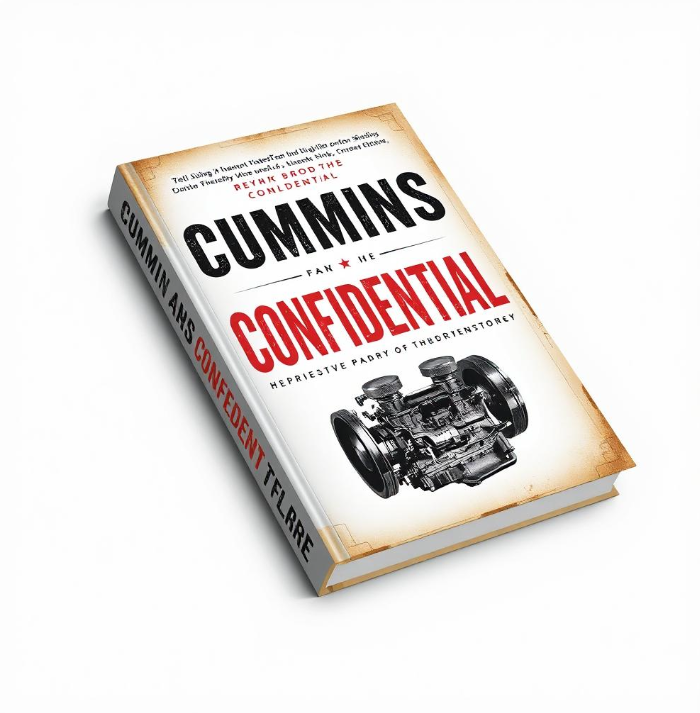
It’s back. Not the diesel fumes – they never left – but the PR fog around them. Cummins has surfaced again, this time whispering sweet nothings about “a broader mix of technologies” and “no write-off for internal combustion yet”. Translation: the future’s electric, but don’t you dare stop buying our engines.
General Manager Felipe Rocha, Europe On-Highway, delivers the sermon: diesel, gas, hydrogen combustion – all apparently part of the clean future. It’s a line so audacious it almost deserves applause. After coughing up $1.675 billion for cheating emissions tests, Cummins is pitching itself as the honest broker of decarbonisation.
Let’s be clear: this isn’t engineering foresight. It’s corporate necromancy – resurrecting the corpse of diesel, dressing it in hydrogen lipstick, and calling it reborn.
Euro 7 Spin – Tight Rules, Looser Morals
Cummins says the coming Euro 7 regime will be a “milestone”, and their HELM engine platform will leap ahead in “combustion and emissions control”. They brag about the X10 engine’s “75 percent lower NOx than required”. Lovely numbers, meaningless context. Euro 7 hasn’t even landed yet, and Cummins is already using tomorrow’s rules to justify yesterday’s product.
Their “U-module aftertreatment” and “wastegate turbocharger” sound like progress – but remember: this is the same company that secretly rewrote its own software to fake cleaner readings. The tech may be new, but the story isn’t.
Euro 7 compliance is meant to last 875,000 km or 15 years. If Cummins’ past is any guide, that’s 875,000 km of plausible deniability.
The Multi-Fuel Mirage
Cummins insists on a “mixed energy future”, where diesel and hydrogen coexist like old lovers who still text. They’ll call it “fuel-agnostic”, but it’s really revenue-agnostic – whatever burns, earns.
The pièce de résistance is hydrogen combustion. Not fuel cells, not clean electrolysis – combustion. Fire, pistons, exhaust, the whole smoky symphony. Rocha promises it’ll deliver “a driving experience similar to diesel”. Of course it will. It’s designed to. Hydrogen or not, the point is to keep engines roaring and Cummins invoices flowing.
You can almost hear the boardroom mantra: Keep the hardware alive long enough to pivot again later.
The Cost of “Coexistence”
Behind the jargon sits the real admission: electrification scares them. Coaches and intercity fleets “remain a significant challenge”, Rocha says – as if the challenge were physics, not profit. Transitioning to zero-emission isn’t “difficult”. It’s expensive for them and empowering for everyone else.
So Cummins does what it always does – rebrand the delay as innovation. Talk “cleaner diesel”, talk “renewable gas”, talk “hydrogen combustion”, anything to stay in the conversation while they keep milking the old model. It’s decarbonisation by press release.
The Real Translation
“We expect a mixed energy future”.
We expect to keep selling engines to everyone forever.“Hydrogen combustion offers a driving experience similar to diesel”.
It pollutes less, but not none – and it keeps us relevant.“Our role is to support OEMs and operators with the right technology”.
Our role is to make sure nobody stops paying us while the planet cooks.
The Verdict
Cummins doesn’t want a clean transition. It wants an eternal middle ground – just green enough to earn ESG points, just dirty enough to stay profitable. The X10, the HELM, the hydrogen hype: all part of a strategy to fossilise “progress” itself.
They’ll keep calling it “a journey”. TCAP calls it what it is – the long, slow funeral of truth, with Cummins still selling tickets at the door.
Lee Thompson – Founder, The Cummins Accountability Project
Source: Internal combustion: don’t write it off any time yet, says Cummins – Route-One, 20 October 2025
